The zoological collection embraces specimens originating in the areas of the Tatra Mountains, the region of Skalne [Rocky] Podhale, the Orawa-Nowy Targ Valley, and the Pieniny Mountains. Here the highlights include Antoni Kocyan’s ornithological collection, Stanisław Batkowski’s collection of the Macrolepidoptera of the Tatra Mountains and the mountain-foot area, plus Józef Fudakowski’s collection of the Tatra dragonflies. The zoological collection also includes seven thousand bones of the cave bear, mostly of the Magurska Cave in the Tatra Mountains.
The geological collection consists of almost 2 800 typical rocks, minerals and fossils of the entire region of the Tatra Mountains and the mountain-foot area. The museum’s geological holdings have a considerable scholarly value and a large part of the items are displayed at a permanent exhibition. They mostly document research on the geology of the Tatra Mountains in the past and at present, credit for which goes to outstanding scholars including Józef Morozewicz, Władysław Pawlica, Mieczysław Limanowski, Zbigniew Wójcik, Jerzy Lefeld and Andrzej Gaździcki. The fine set of marine fossils (ammonites, sea urchins, molluscs, and snails among others) assembled by Edward Passendorfer is quite distinct.
Modernized in 2007, the permanent natural history exhibition in the main building of the Tatra Museum offers an insight into the geological structure and animated nature of the Tatra Mountains.
After the Museum was nationalized in 1949 and professional ethnographers were employed, systematic purchases began with a view to complementing the ethnographic collection. In the post-war period, the main stress was on the purchase of contemporary painting on glass, folk sculpture and crafts, especially metal and leather articles, and contemporary Podhale costume. Other purchases were to enrich the farming and transport section. Though often devoid of artistic value, these items are indispensable as an illustration of the overall material culture of the Tatra people.
Only part of the ethnographic collection is accessible to the public. The main building houses a permanent ethnographic display highlighting folk culture in the region of Podhale between the second half of the 19th century and the present. Ethnographic exhibitions are accessible to the public in the filial branches at Łopuszna, Chochołów, Jurgów and Czarna Góra, arranged as they are in the late 19th-century/early 20th-century cottage interiors and farm buildings.
The largest set is undoubtedly that of paintings, prints and drawings featuring Tatra subjects that made their first appearance in Polish art in the first half of the 19th century. The initial fashion favoured evocative landscapes exuding an awe-inspiring, mysterious mood of the mountains. In 1837 Jan Nepomucen Głowacki painted Morskie Oko [‘Marine Eye’, a tarn], the first Tatra landscape in Polish art, which marked the beginning of the history of Polish mountain landscape painting. Jan Kanty Wojnarowski’s c. 1860 watercolour copy of Głowacki’s Morskie Oko is in the Tatra Museum collection. The earliest Tatra landscapes also include Alfred Schouppe’s Mt Łomnica and The Strążyska Valley. The Art Department boasts a fairly large set of watercolours and prints by Walery Eljasz, a popular Cracow painter closely connected with the Tatra Mountains and an activist of the Tatra Society. Of later artists, mention is due primarily to Leon Wyczółkowski, Aleksander Mroczkowski and the less known ones, including. Stefan Filipkiewicz, Maks Haneman, Wanda Gentil Tippenhauer, Rafał Malczewski and Alfred Terlecki. The most numerous in the landscape section are pieces by the Zakopane painter Stanisław Gałek (1876–1961), a student of Jan Stanisławski’s (thirty items).
Another large set embraces portraits in various techniques of sitters well known in Zakopane: artists, politicians and sportsmen, in addition to Tatra people types. Those celebrated in them include the Tatra Museum patron Dr Tytus Chałubiński, Stanisław Witkiewicz (painted by Jacek Malczewski among other artists), Jan Krzeptowski Sabała the famous Tatra story-teller and musician, and the local guides, including Wojciech Roj painted by Stanisław Witkiewicz. There are also portraits in pastel by Stanisław Ignacy Witkiewicz (Witkacy) of the customers of his famous ‘Portrait Firm’.
The Library holds prints, manuscripts, iconographic materials and documentary materials in a range defined by the museum’s tasks and the institution’s needs dictated by its research, documentation, publishing and educational functions. The book holdings embrace items devoted to the Tatra Mountains and the regions of Podhale, Spisz and Orawa, the ethnography of Poland at large, museum science, and works on general subjects. The Library is composed of a book collection (27 000 books proper and over 2 000 titles of periodical publications) and special collections. The latter comprise maps, a musical collection (records and scores), photographic archive (positives, negatives and transparencies), print collection (printed iconographic materials), technical documentation, community life documents and press cuttings.
At the moment of writing, the Tatra Museum archives contain about 3 500 items from the 17th–20th centuries. The highlights of the archival collections and sets include first and foremost parchment documents, the 1628–1766 royal privileges granted to village administrators by the names of Dzielski, Nowobilski and Chochołowski. There is also the 1674 ennoblement certificate issued by Emperor Leopold I of Austria to confirm the new status of the Moniak family of Zubrzyca Górna. Records of societies and institutions operating in Zakopane as of the late 19th century, the Polish Tatra Society (1873–1930) and its Ethnographic Section (1913–18), Committee for the Tytus Chałubiński Monument Erection (1900–4), the Zakopane Elementary School Society (1909–32), School of Timber Industry (1881–1946) and the PTTK Podhale Society for the Protection of Monuments (1951–80), feature prominently in the archives.
The archives also embrace items concerning the history of the Zakopane press. Here mention is due to editorial documents of the Przegląd Zakopiański [Zakopane Review] (1899–1906), Zakopane (1908–14), Echo Tatrzańskie [Tatra Echo] (1918–19), Gazeta Podhalańska [Podhale Gazette] (1913–34), Gazeta Zakopiańska [Zakopane Gazette] (1893) and Zakopane Publishing Co-op (1913–14).
As a special category in the collection, there are archives of families due to their varied activities connected with Zakopane, Spisz and Orawa. Those worthy of mention in this context are the Homolacs family of Zakopane (1813–1909), the Machay family of Jabłonka (1930–62), the Moniak family of Zubrzyca Górna (17th–18th c.), the Uznański family of Szaflary (1827–1939), the Wilczek and Divéky families of Podwilk (17th–20th c.), and the Witkiewicz family (19th–20th c.).
The region of Podhale, and especially Zakopane have for years been the area of activities of numerous, often outstanding individualities representing culture, politics and economy, who have made important contributions to the development of the town and the region. Stored in the Tatra Museum Archives are papers of Stanisław Barabasz (1857–1949)*, Wojciech Brzega (1872–1941), Jan Bednarski (1866–1926), Bronisław (1888–1912) and Maria Dembowski, Józef Diehl (1882–1955), Kazimierz and Bronisława Dłuski (1900–1922), Stanisław Eljasz-Radzikowski (1869–1935), Aniela Gut-Stapińska (1898–1954), Matylda Jostowa (1882–1977), Kornel Makuszyński (1884–1953), Olga Małkowska (1888–1979), Franciszek Henryk Nowicki (1864–1935), Jan Pluciński (1897–1982), Helena Roj-Kozłowska (1900–1955), Kazimierz Saysse-Tobiczyk (1891–1980), Mariusz Zaruski (1867–1941), and Juliusz Zborowski (1913–1965).
* Dates given in brackets represent the years covered by documents in the museum archives.


